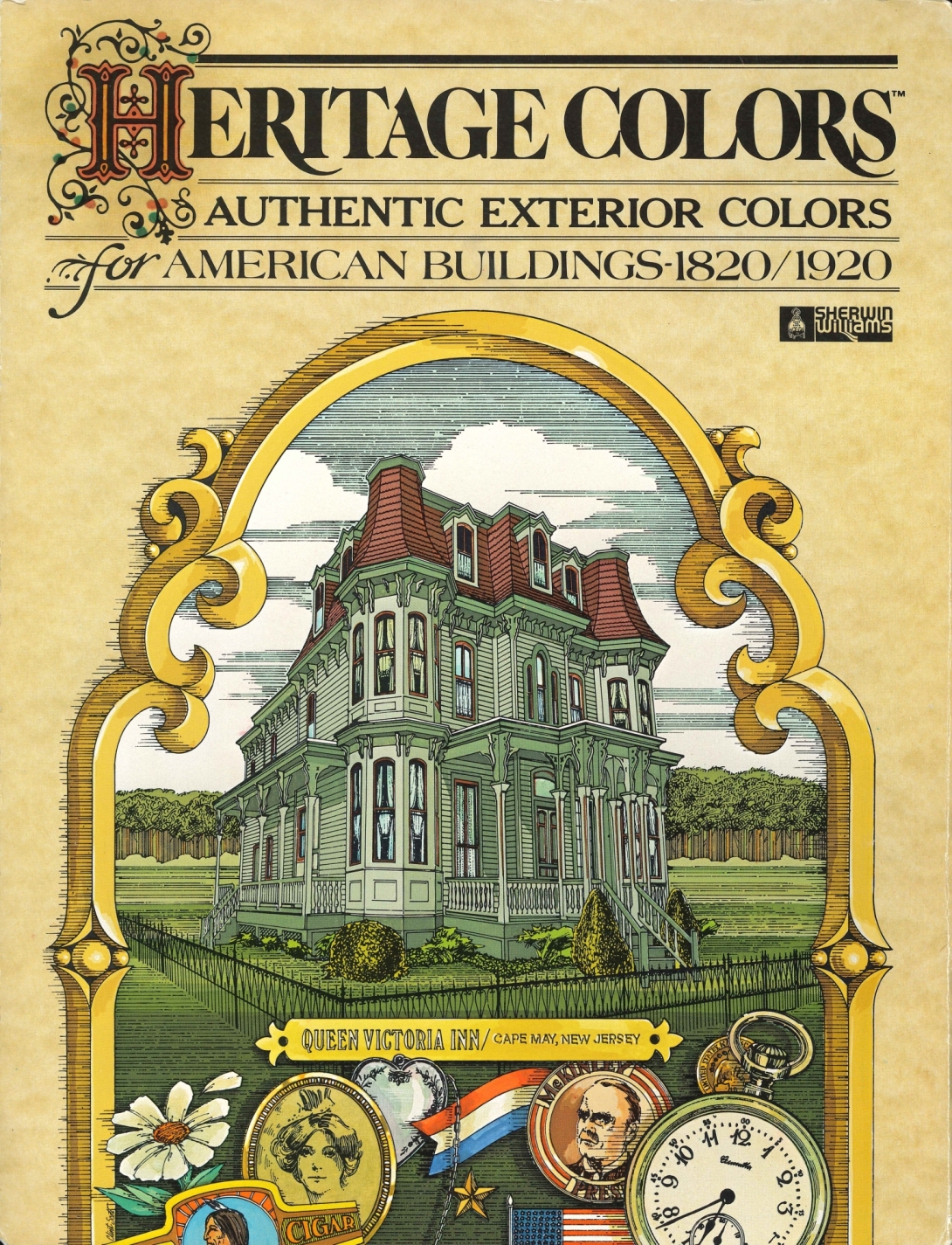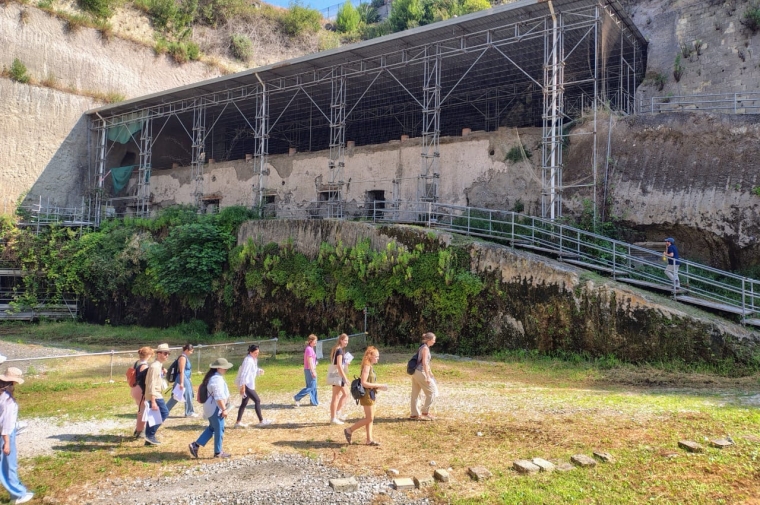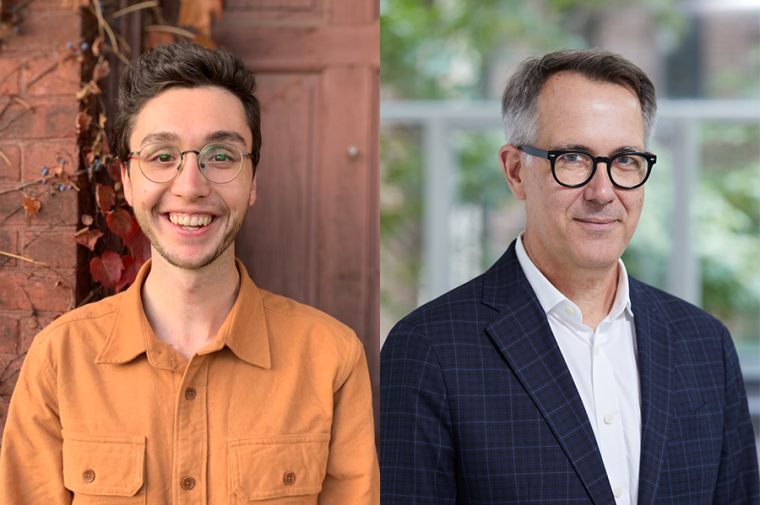March 19, 2025
Stuart Weitzman School of Design
102 Meyerson Hall
210 South 34th Street
Philadelphia, PA 19104
Get the latest Weitzman news in your Inbox
Areas
Roger W. Moss was an adjunct professor of historic preservation from the program’s inception in 1981 and a key figure in the program’s formative years. In addition to influencing generations of preservation practitioners at Penn, Moss served as the executive director of the Philadelphia Athenaeum from 1968 – 2008.
Each fall, Moss taught Documentation & Archival Research, a requirement for incoming preservation students that continues to be taught today as HSPV 6000. His other courses in specialized pursuits included American Domestic Environments, Historic Site Management, and Mechanical Systems of Historic Buildings.
Says Frank Matero, Gonick Family Professor and chair of historic preservation, "For over 20 years Roger served as the program's drill sergeant in historical research methods where students pieced together the lives of Philadelphia's famous and anonymous and the buildings they inhabited. What is equally impressive was Roger's dedication, along with his work-life partner, Gail Caskey Winkler, to the serious study of American nineteenth century architecture and decorative arts, elevating it from the joke bin of modern Architecture culture to one of serious scholarly pursuit."
“Roger was a wonderful teacher,” remembers David De Long, professor emeritus of architecture and the first chair of historic preservation. “He got the students into all the key archives in the city with his position at the Athenaeum. He had a certain amount of clout. And he gave them a wonderful grounding in how to go about documenting buildings and doing research. Students did complain about the difficulty of it, but I knew that if they made it through the class, they were going to be OK in the program.”

Roger Moss (right) at a preservation program party in 1992.
For David Hollenberg, adjunct professor of historic preservation, “Roger was fundamental in taking what had been a grassroots political movement of people who wanted to save historic properties, and trying to turn it into a genuine academic discipline. He was fundamental to making sure that there was rigor associated with that effort.”
Moss published widely on Victorian architectural finishes and Philadelphia architectural assets, drawing extensively from Athenaeum collections. Moss often worked in collaboration with Winkler, who joined the faculty in 1996. Together, they operated LCA Associates, a historic preservation consultancy firm specializing in recreating authentic historic interiors and exterior finishes.
Below, a few of Roger Moss’s former students reflect on time spent learning from him, and his influence that reverberates today.
Emily T. Cooperman (MSHP’93)
Roger Moss’s contributions to the Historic Preservation program for the many years he taught at Penn were an invaluable introduction to a broad range of key topics and practices for first year graduate students. Many of these (including me) had no background in the field and no sense of the techniques and strategies of primary documentary research, let alone where to conduct it. His approach gave us in-person introductions not only to the key historical institutions and research repositories of the city, but to the staff of those important institutions and their collections. These connections which I still cherish were made possible by Roger. His deep affinity for primary material made him the ideal person to give us a sense of the remarkable abundance and the significance of Philadelphia’s collections, a fact I only came to truly appreciate in retrospect. Roger believed in his students doing the real thing rather than mere academic exercises. His rich legacy is not only in the preservation of Philadelphia's buildings and historical collections but also his students' commitment to and shared understanding of these.
Jean K. Wolf (MSHP’93)
I became the administrator of Penn’s Historic Preservation Program in 1986 after becoming acquainted with newly documented Historic Districts in Lower Merion Township where I live. Roger Moss was one of the adjunct faculty members who I quickly go to know through his campus presence when he taught the required course “Documentation of the Built Environment.” After a year or so I enrolled in Roger’s course to work toward a “free” master’s degree in preservation as an employee of the university. Roger always introduced his students to the Athenaeum. I was amazed at the building’s history, elaborate interior, and the library and archives of architectural drawings housed there. This was Roger’s home base and one of which he was very proud. I eventually became a stockholder, found my thesis topic in the Athenaeum’s library files, and became ever grateful that Roger had allowed me to use my family’s historic south New Jersey summer home for his documentation course. Just this past year, my chain of title back to the last quarter of the 18th century helped sell the historic property with authenticity for its history and ownership. Roger was a great and valued teacher who shared his passion for the history of architecture and the built environment with all. Thanks to support of the Barra Foundation, his additional legacy is a set of three fact-filled elegant books on historic homes, sacred places, and historic landmarks of Philadelphia that include Tom Crane’s photographs. It was my great honor and pleasure to assist Roger during preparation of the last volume. All are testimony to his penchant for sharing knowledge of historic buildings and places for a better understanding of this country’s past. From our hearts, thank you, Roger Moss, for all you taught us and shared.

This Sherwin-Williams Heritage Colors color sample insert, included in Century of Color: Exterior Decoration for American Buildings, 1820–1920, showcases the original line of period-accurate paints developed by Roger Moss.
Lisa DiChiera (MSHP’92)
While Roger Moss was known as an expert on the Victorian period of design, and with Gail Winkler taught Penn Preservation students about the beauty, influences and aesthetic characteristics of American architecture, what I learned most from him were the practicalities of research and historic preservation. He pushed students to dig into a building’s functional history – its original use, mechanical systems, materials. How was it built, who was the owner or occupant and their everyday living standards in the building. He raised the funding challenges for house museums and how historic site management can be sustainable. In the classroom, I recall an obvious recommendation, verging on scolding, regarding student presentations, “If the image is out of focus, don’t use it!” He was approachable, always available, and an overall kind man.
Julia E. Coombs (MSHP’97)
Roger was certainly one-of-a-kind. I suspect he and I got along thanks in no small part due to a similarity in our backgrounds. We are both from Ohio and both moved East to pursue further education. More importantly, we both shared a delight in beauty, whether that of architecture, decorative arts, or words. That man could write! And he shared generously of his talents by teaching and insisting that I and all his students learn to do so properly. Of course he was well-published. What was less public was his love of a well-turned phrase evidenced in his annual fundraising letters to the members at his beloved Athenaeum. He shared a few examples with our class, and I took considerable delight in the clever humor with which he infused those letters. I imagine his humor tickled the donors’ wallets too! I will always be grateful to him for his kindness, and for introducing me to so many beautiful places in Philadelphia, through on-site coursework all over the city that helped make our classes come alive. I am honored to have been one of his students.
Stephen Harrison (MSHP’92)
Roger Moss was a pioneer in the world of historic preservation and material culture. He was cunning when he needed to be to save immensely historic drawings and documents, as he did with Thomas Ustick Walter’s drawings for the US Capitol now safely kept at the Athenaeum of Philadelphia because of him and incredibly generous with his time and talents in teaching the fundamentals of research to nascent graduate students, of which I was just one of hundreds. He taught me how to look up and out with my eyes at the built environment around me and at the same time how to run an airtight chain of title. Roger never stopped teaching and giving his time and knowledge to his students. Together with Gail Winkler, they transformed the way I look at the world, and I, along with everyone else who took their classes and became their friends, will forever be grateful.
Mark Isaksen (MSHP’92)
Attending the historic preservation program was an incredible learning experience for me. As I became more interested in historic sites, Roger Moss, as well as Gail Winkler, showed me the way to focus on the physical fabric of historic structures and to also think about the people who animated these interior spaces and how these architectural legacies shaped community identity. Roger Moss infused his classes with rigor and attention to detail and outside of the classroom he and Gail made sure that many of us felt connected to each other at Penn and appreciative of all quirks and charm within the historic fabric of Philadelphia.
Jessica Senker (MSHP’03)
I will always remember my first day at Penn, sitting in his class - and feeling so lucky to be there. His kindness and generous spirit was so needed on that first day (9/11/01). We stopped for a short break from class and walked out of our class cocoon to learn of the horrific events taking place. I will always remember that day for so many reasons, but his great kindness and concern for us will continue to be part of that memory.
Robert Saarnio (MSHP’94)
I’m honored to share reflections about our beloved professor, mentor, and friend Roger Moss, whose Documentation and Archives class was my introduction to his thoughtful approach to pedagogy, scholarship….and rigor. Subsequently it was his course on Historic Sites Management that entailed direct career-long guidance for me, though to a degree that I couldn’t possibly have imagined at the time.
In my first summer in Philadelphia I had the honor of winning an award to work at the Athenaeum of Philadelphia, where Roger and Bruce Laverty were my supervisors in cataloging architectural drawings. As always, Roger was a supportive guiding hand, but also demanding of deep attention to detail which in retrospect has been such an enduring hallmark of his influence.
What came next in my career really says it all about Roger—he gave continual evidence of caring about me as I graduated and explored employment options. Roger combined two different attributes in a way that stays with me still: he supported me with references, but also spoke very frankly and candidly about places I was considering or heading toward. He stayed in touch and asked about my work, and true to a north star of his values he once told me you are not a good fit for this position and it’s best I not be a reference. Rough to hear, but in retrospect I came to see the deep wellspring of honesty—and yet care for me still—that lay at the heart of that input.
Roger, I’m still doing my best to manage historic sites in a manner that you might be proud of, and yes we still invite the local firehouse crew and fire battalion chief over annually for a thank-you lunch and walkthrough. We were listening to you because you made even the smallest anecdotal lesson feel memorable.
We will miss you greatly, you have left a profoundly deep legacy that we are so proud and humbled to have been a part of.


 Expand Image
Expand Image


